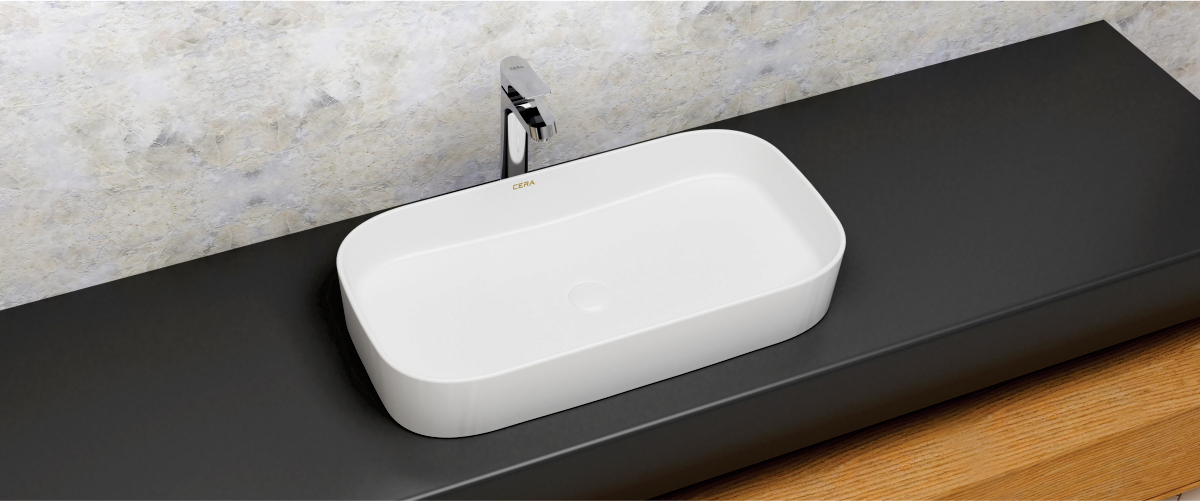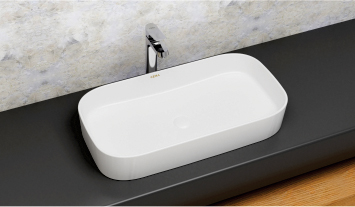- Sanitaryware
People often mix up "sink" and "washbasin," but they differ in use and design. A sink is usually larger & deeper, mostly used in kitchens or utility areas. A washbasin is smaller and mainly used in bathrooms for washing hands and face.
The difference between a sink and a washbasin lies in their use, materials, & design. Knowing which one is best suited for your kitchen or bathroom can make a big difference. Whether you're planning a modern kitchen or a stylish bathroom, understanding these differences will help you choose the right fixture for your home.
What is a Sink?
A sink is a deep fixture mainly found in kitchens or utility areas. It is used for heavy-duty work such as:
- Washing dishes
- Cleaning vegetables and fruits
- Cleaning utensils and cookware
Kitchen sinks are bigger and deeper compared to basins. They are designed to handle more water and larger items.
What is a Wash Basin?
A wash basin is usually found in bathrooms and is used for personal hygiene tasks like:
- Washing hands and face
- Brushing teeth
- Shaving
Basins are smaller, more stylish, and focus more on design and comfort than heavy-duty use. This basic explanation makes the basin sink difference clear in terms of use and location.
Key Differences Between Sink vs Wash Basin
Here's a simple comparison chart to help you understand the sink vs basin debate more clearly.
Feature
Sink
Wash Basin
Main Use
Dishwashing, food prep, cleaning
Handwashing, brushing, shaving
Location
Kitchen, utility room
Bathroom, powder room
Size & Depth
Larger and deeper
Smaller and shallower
Material
Stainless steel, quartz, granite
Ceramic, porcelain, glass
Design Focus
Functionality
Aesthetics and comfort
Accessories
Drainboard, faucet, garbage disposal
Mirror, soap dish, towel ring
So the difference between wash basin and sink lies in usage, size, location, and design.
Different Materials Used in Sinks and Wash Basins
Knowing the materials helps you choose the right product for durability and design.
Common Materials for Sinks:
- Stainless Steel – Strong, rust-free, and easy to clean. Perfect for all kitchens.
- Granite Composite – Stylish and scratch-resistant.
- Quartz/Stone – Heat-resistant and modern-looking.
- Ceramic – Rare in kitchens, but used for classic or vintage looks.
Common Materials for Wash Basins:
- Ceramic – Most commonly used, shiny, and low maintenance.
- Porcelain – A smoother, finer ceramic. Very durable.
- Glass – Looks modern. Best for vessel basins.
- Stone/Marble – Premium choice. Used in luxury bathrooms.
The basin and sink difference is also clear when it comes to material preference based on room type.
Sink vs. Wash Basin Sizes, Shapes, and Installation Types
Let’s take a look at how sink vs wash basin differ in size and design:-
Feature
Sink
Wash Basin
Size
22–33 inches wide, 8–10 inches deep
16–24 inches wide, 5–8 inches deep
Common Shapes
Square, Rectangle, D-shape, Single/Double Bowl
Round, Oval, Square, Rectangle
Installation Types
- Drop-in Sink: Easy to fit into a counter cut-out
- Undermount Sink: Fitted under the counter for a clean look
- Farmhouse Sink: Deep and stylish with a visible front
- Wall-mounted Basin: Best for small bathrooms
- Pedestal Basin: Classic look with a stand below
- Console Basin: Has open shelves or stands
- Vessel Basin: Sits above the counter like a bowl
- Drop-in Basin: Fits in a cut-out like a drop-in sink
Best Used In
Kitchens, Utility Areas
Bathrooms, Washrooms
This explains the practical basin sink difference based on space and design.
How to Choose Between Sinks and Wash Basins
1. Use a Sink When:-
- You need to wash large utensils.
- Your work includes a lot of water and cleaning.
- You’re designing a kitchen or utility area.
2. Use a Wash Basin When:-
- You need a space for handwashing or brushing your teeth.
- You’re designing a bathroom or powder room.
- You want a stylish and compact setup.
This clears the sink vs basin question for different parts of your home.
Popular Styles Options
Kitchen Sink Styles
- Single Bowl Sink – Great for small families.
- Double Bowl Sink – Helpful for multitasking (wash + rinse).
- Corner Sink – Space-saving for L-shaped counters.
- Integrated Sink – Built into the countertop. Very modern.
Bathroom Wash Basin Styles
- Wall-mounted – Clean and simple.
- Pedestal – Hides pipes, classic style.
- Vessel – Fancy and modern.
- Console – Storage-friendly with open shelves.
- Under-counter – Easy to clean and sleek.
Understanding the difference between sink and wash basin helps in picking the right one for each room.
Conclusion
A sink is your go-to for heavy work like dishwashing and cleaning in kitchens or utility rooms. A wash basin is ideal for personal hygiene in bathrooms.
They are both important fixtures, but their design, size, material, and purpose are quite different. By understanding the sink vs wash basin comparison clearly, you can make better home improvement decisions.
The next time you are shopping for home fixtures, remember the basin and sink difference and choose wisely!
FAQs
Can I use a kitchen sink in the bathroom?
Yes, you can. But it’s not ideal! Kitchen sinks are too large and deep for comfort in bathrooms.
What is the most durable kitchen sink material?
Stainless steel is the most durable and budget-friendly.
Which basin is best for small bathrooms?
Wall-mounted or corner basins are the best solution for small bathrooms.
Can I install a basin in my kitchen?
It’s possible, but basins aren’t made for the demands of kitchen work. So, it is better to opt for a sink in your kitchen.
Are vessel basins hard to maintain?
No, vessel basins are not hard to maintain. They’re easy to clean, but they might splash more than other types.
Drop-in vs Undermount sink – what’s the difference?
Drop-in sits above the counter; undermount is installed below for a cleaner look.


